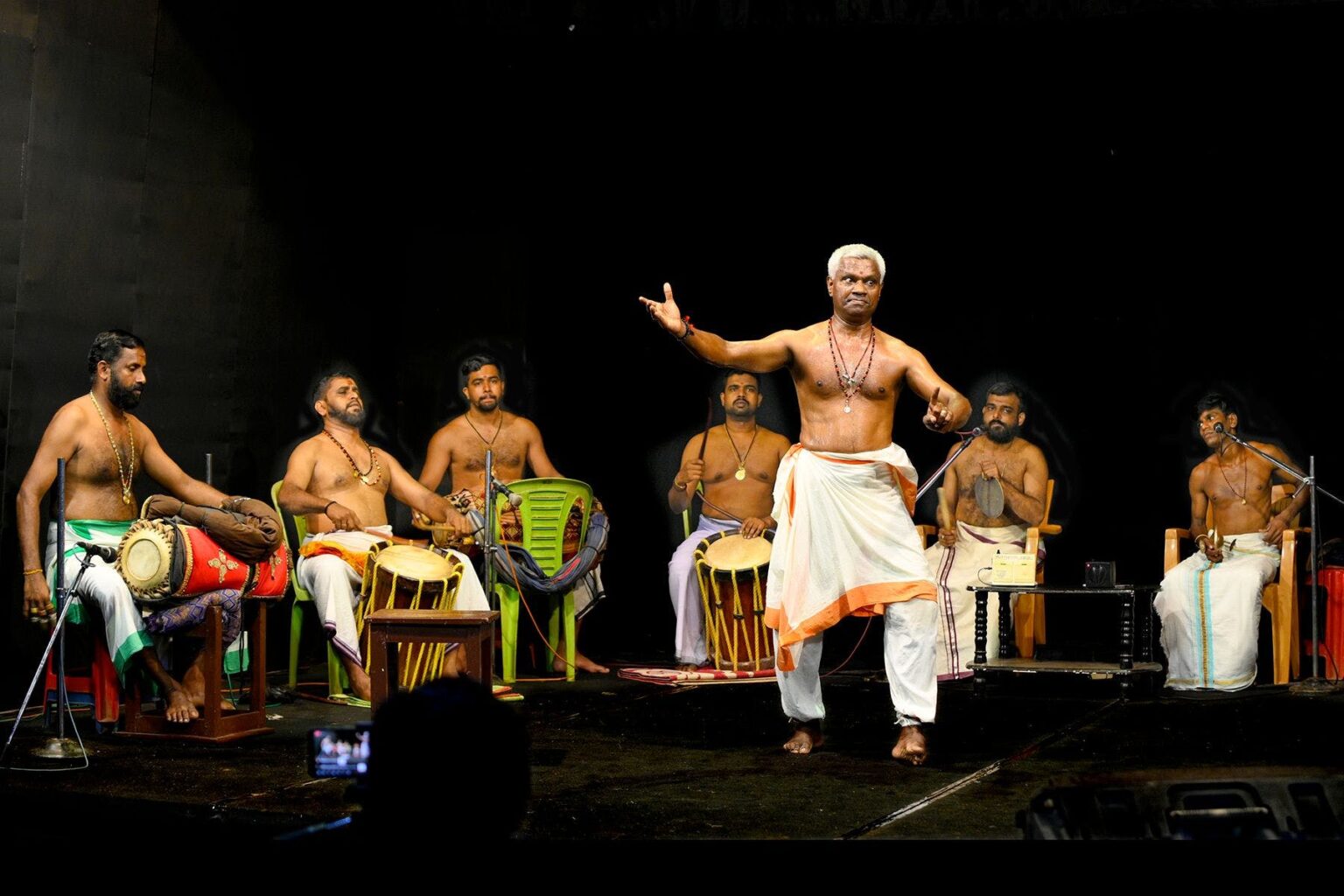At a landmark workshop on Kathakali Melam held at Karalmanna in Kerala, percussion maestros flagged the need for innovation as well as synchronization with acting.
Kathakali is a visual art performed with the support of music and percussion. Though Kathakali is considered a classical example of a traditional storytelling medium with a deep focus on acting, music and percussion have critical roles in its execution. The new generation of artists and enthusiasts is increasingly aware of the importance of a fine balance between these elements in the effective execution of a Kathakali performance.
Realising the need for innovation in percussion, while at the same time, keeping the old techniques intact, for the benefit of the coming generations, a weeklong workshop on Kathakali Melam was organized at Vazhenkada Kunju Nair Trust, Karalmanna, in Kerala’s Palakkad district recently. The workshop was jointly organized by Kerala Kalamandalam, the pioneer institution that promotes Kerala’s classical art forms, and the Kunju Nair Trust. Kalamandalam Unnikrishnan, former principal of Kalamandalam, directed the workshop.
The workshop was designed by Unnikrishnan with this question in mind: ‘How can a melam (percussion, especially the chenda) be used for a Kathakali Padam’s better performance? ‘Actually, this issue is part of the normal Kathakali training regime. But, Unnikrishnan, during the course of the workshop, tried to explore new methods and techniques for the enactment of certain scenes in the Kathakali texts.
Maestros Remembered
About 150 people from across Kerala participated in the workshop. Each of the seven days was dedicated to one maestro of yesteryear whose creative contribution has enriched the Chenda or the Maddalam. Each day, the Cholliyaattam (traditional training) started with percussion and music with Unnikrishnan explaining the features of the ‘melam’ of a particular part of a particular performance. A question-and-answer session followed each performance that lasted about 45 minutes.
Senior artists such as Kalamandalam Guruvayur Haridas, Kalamandalam Krishnakumar, Peesappalli Rajeevan, Sadanam Bhasi, Kalamandalam Manoj, Sadanam Manikantan and Kalamamdalam Pradeep presented a piece each of Cholliyattam. Haridas, in spite of his age, performed the Salajjoham and Swarga Varnana. His unparalleled perfection in footwork and body movements were well appreciated by the workshop attendees. In a nail-biting performance, Kalamandalam Krishnakumar, senior artiste and former teacher at Kalamandalam, presented Roudra Bheema’s entry and fight with Dussasana.
Peesappalli Rajeevan’s enactment of Karna’s soliloquy was new in terms of the content. Though the topic looked a little confusing, Rajeevan did justice to the character. Sadanam Bhasi performed his masterpiece role of Hanuma’s crossing of the sea in Thorana Yudham. His energetic body movements were in sync with the percussion. Another notable performance was by Kalamandalam Manoj, who presented the Ekalochanam in ‘Uthara Swayamvaram Kathakali with elan. His movements were a bit stiff, but he held the standard of that character high. Sadanam Manikantan, another senior performer, donned the role of Kirmeera in Kirmeera Vadhom. Kalamandalam Pradeep’s Ravanan in Thorana Yudham was not up to the mark due to the confusion created by the percussion used for the entry of Ravana.
Perfecting the Percussion
Since the workshop was designed and conducted by Kalamandalam Unnikrishnan, the veteran chenda maestro, his colleagues, and Chenda disciples too played a big role in the success of the workshop. Senior Chenda players like Sadanam Vasudevan, Kalamandalam Prabhakara Poduval, Kurur Vasudevan Namboodiri, Kalamandalam Raman Namboodiri, Kalamandalam Balaraman, Kalanilayam Kunjunni, Kalamandalam Vijayakrishnan were the key speakers for the seven days. Kalamandalam Narayanan Nair and Kariyannur Narayanan Namboodiri were around to motivate the artistes.
Kalamandalam Unnikrishnan and Kalamandalam Balaraman
Another remarkable presence was that of the Chenda superstar Padmashree Mattannur Sankarankutty Marar, who stayed on for two days. “This is a remarkable event in the history of Kathakali Melam,” commented Mattannur.“The workshop has given a golden opportunity to the new-generation artists to present their talents in front of several great Chenda maestros.”
Mattannur Sankarankutty Marar
Though the workshop had actually aimed to benefit Chenda players, Maddalam players and Kathakali musicians gained much too. Senior singers such as Kottakkal Madhu, Kalamandalam Hareesh, Nedumpalli Rammohan, and Sadanam Sivadas displayed their talents and shared their experiences at the workshop. Maddalam players including Kottakkal Ravi, who was the deputy director of the workshop, Kalamamdalam Haridas, Kalamandalam Rajanarayanan, and Kalamandalam Venu were also present.
Photos : Sreedevan Cherumittam
Write to us at editor@indiaartreview.com

